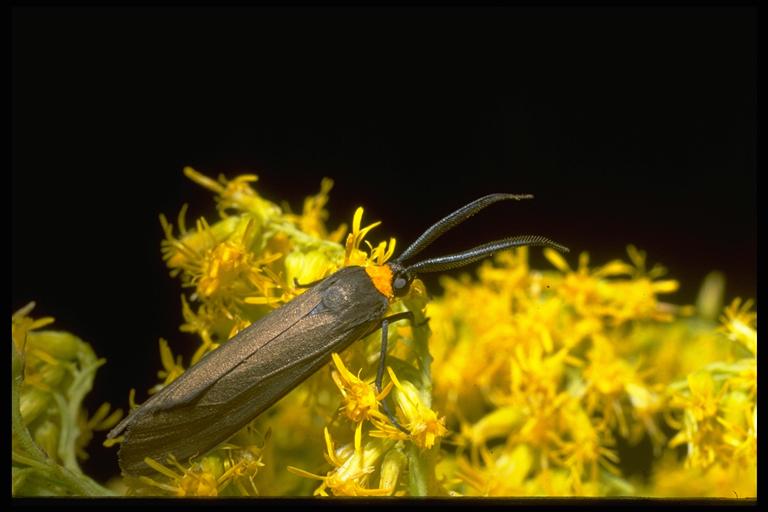
Yellowcollared scape moth, Cisseps fulvicollus (Hübner)(Lepidoptera: Ctenuchinae). Photo by Drees.
Common Name: Yellowcollared scape moth
Scientific Name: Cisseps fulvicollus (Hübner)
Order: Lepidoptera
Description: Small (5/8 inch long) has black forewings and paler, black-margined hind wings. The part of the thorax behind the head (prothorax) is yellow.
This is one of several species of day-flying moths called “wasp moths.” Other species of day-flying moths are often colorful. Another species, the ermine moth, Atteva punctella (Cramer) (Lepidoptera: Yponomeutidae), are also small (½ inch long) moths with narrow forewings (held over the back when at rest) that are bright yellow with four bands of yellow spots edged in lead blue. Caterpillars feed on leaves of ailanthus and produce silken webs. The eight-spotted forester, Alypia octomaculata (Fabricius) (Lepidoptera: Noctuidae) is black with two whitish or yellowish spots on each wing, with a 3/4 inch wingspan. Caterpillars feed on Virginia creeper and grape leaves. Since antennae are slightly clubbed, it can be confused with a skipper butterfly (Lepidoptera: Hesperiidae).
Life Cycle: Complete metamorphosis. Chewing caterpillars; siphoning adults.
Habitat and Food Source(s): Caterpillars feed on grasses. Adults commonly visit goldenrod flowers during daytime in late summer.
Pest Status: These are day-flying moths frequently seen on flowers; medically harmless.
For additional information, contact your local Texas A&M AgriLife Extension Service agent or search for other state Extension offices.
Literature: Borror et al. 1989; Holland 1968.